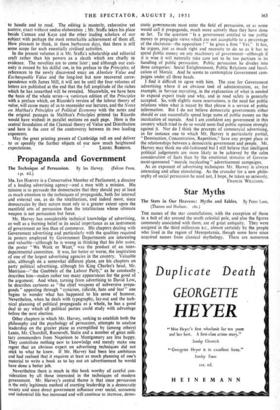Star Myths
Tim names of the star constellations, with the exception of those in a belt of sky around the south celestial pole, and also the figures commonly associated with them, are of great antiquity. They were assigned in the third millenium Lc., almost certainly by the people who lived in the region of Mesopotamia, though some have since acquired names from classical mythology. There are numerous myths and tables associated with the constellations themselves and with individual stars. They are to be found amongst all peoples, and a surprising fact is that there are often resemblances to be found between the myths of different peoples. These old stories are of considerable interest, and are a great help in remembering the figures of the constellations, the names of individual stars, and the relative positions in the sky.
- In this volume many of these myths and fables from the Chaldeans, Babylonians, Greeks, Romans, Chinese, and Hinduk, as well as from the Scandinavian sagas and from the North American Indians, are collected under the headings of, the various constella- tions. Along with them much information is given about individual stars. It is not generally known, for instance, that the word cynosure is derived from the old Greek name for the Pole Star, Cynosura or the Tail of the Dog, the guiding star on which the eyes of all mariners were constantly fixed at night. The volume is illus- trated by a number of drawings, by Anne Marie Jauss, of figures of individual constellations or of groups of adjacent constellations, showing the principal stars with their names. Lines connecting these stars are drawn so as to provide a guide in remembering them. These figures have not the beauty and charm of those in Bayer's Uranometria of 1603, or of those in Flamsteed's Atlas Coelestis of 1726 (drawn by Sir James Thornhill), though they are obviously based• on the traditional figures ; they have the virtue of clarity.
The book should prove of special interest to young people who are learning about the stars, and will undoubtedly stimulate them to trace out the constellations in the sky. It could with advantage have































 Previous page
Previous page